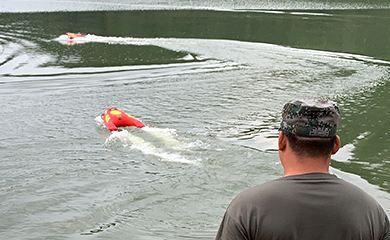
During its first 10 days in the water, R1 saved 240 refugees from drowning. R1 is battery powered and can move up to 15.65 miles per hour while carrying up to five people. It doesn't need a crew to operate and can withstand nearly anything the ocean can throw at it. Its sturdiness is incredible thanks to its HDPE hull with fluid mechanics design. While it doesn't work autonomously, R1 can save lives by reaching those in need as quickly as possible.
Complex waters threaten the lives of frogmen when they have to salvage owing to missions required. For one, the place where accident happened must be dangerous in terms of its density, currents, temperature, depth and so on. To lower the risks and to keep them safer, a new tech device came to the spotlight for salvage missions. JTT’s Underwater Robot P1 is the very good partner for helping frogmen and rescuers see, work, salvage, and save under the water.
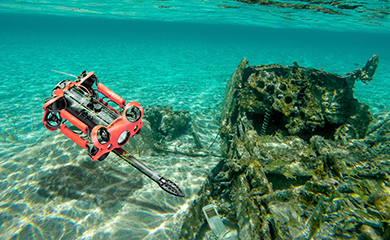
For the river was murky and broad, frogmen needed to search the body and investigate and find out the reasons why there was an accident in a day. P1 then was put into use as it supports 4K recording and 4000 Lumen LED that brightens the searching area down the water to easier find out the body. According to the location depicted by the witnesses, P1 went there at the speeds of 1.5 meters per second then used its robotic arm, camera and LED to work together. What’s more, all the videos can be transmitted back to the remote control screen where’s also where P1 is controlled on.
During its first 10 days in the water, R1 saved 240 refugees from drowning. R1 is battery powered and can move up to 15.65 miles per hour while carrying up to five people. It doesn't need a crew to operate and can withstand nearly anything the ocean can throw at it. Its sturdiness is incredible thanks to its HDPE hull with fluid mechanics design. While it doesn't work autonomously, R1 can save lives by reaching those in need as quickly as possible.
People, property and infrastructure facing flood’s impacts are basically vulnerable to some extent. Especially for people who live in Southeast Asia, storms & floods come often due to climate change, as rising temperatures lead to intense heat which exposes the regions to natural disasters. However, new tech has met the demands coming into rescue teams, fire departments and organizations. JTT’s J1(unmanned rescue boat J1) is one of a kind that proves it can save lives rapidly. It’s remote-controlled and can save 4-6 people at one time.
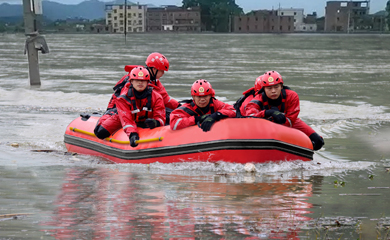
It was deployed in Tuguegarao city, Philippines after the rescue teams received alerts from the weather forecast. A day after the deployment, devastating floods submerged, and torrential rains and back-to-back typhoons ripped through the city and even the country. J1 went to save while facing the floods. It saved 120 villagers from drowning. J1 can be controlled within 2000 meters and is battery powered and can move up to 6 meters per second while carrying people. Plus, as it’s remote controlled, it saves costs and energy to even save victims as there are handles around the boat where victims can catch and hold them easily. It doesn't need a crew to operate.
Thanks to climate change and the increasing temperatures across the globe as well as accident in residential areas, fire breakout seems like it’s come to our lives any minute. These blazes are causing billions of dollars in property damage and are destroying both human and animal life. Fire crews work around the clock to suppress these blazes, but they aren't always successful and most importantly safe. This work by all means costs them their lives. It just depends on probability. Yet, Fire Fighting Robots L1 can help with nearly every aspect of wildfire management and firefighting.
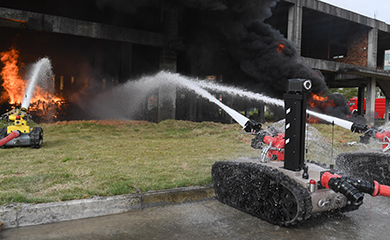
Fire Fighting Robot L1
They can put out the fire using water through hose or carry fire extinguishing equipment to produce foam to snuff out the fire and access where fires might spread using GPS and video transmission. Plus, Fighting Robots L1 can also use different payloads to meet the needs during the scene of fire, such as smoke exhausting equipment, robotic arm and such. The best way to keep a wildfire from burning out of control is to prevent it from starting in the first place. But when this isn't an option, robots make the job way easier.
These devices don't need to rest and are resistant to smoke damage. They can operate without the heavy oxygen tanks, however human fire crews need to breathe in smoky areas which could inflame their lungs and airway, causing them to swell and block oxygen, and leading them to acute respiratory distress syndrome and respiratory failure.
Maritime Security Management
There are some places we think they are actually safe just because many people there having fun - the beach - but what’s dangerous is the strong wind and waves that are usually strong while they are surfing, swimming and more. Yet using drone - Spider C85 - helps monitor the whole area with people going back and forth, from the aerial sight.
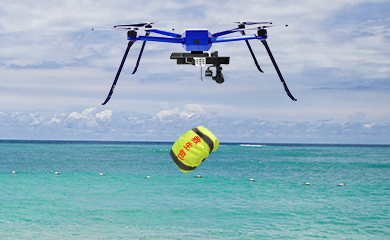
The accident happened when sea grass caught someone foot that made him lose his balance when swimming. He then slowly was getting drowned and lost control. C85 found out there’s something abnormal on water that he was going up and down. C85 then used the HD 30X camera to zoom in and saw there was someone was drowning. C85 then located him and found out he’s one of the tourists at the beach by face recognition. Then C85 dropped and released the life-saving bag and then he finally grasped it and got to breathe.